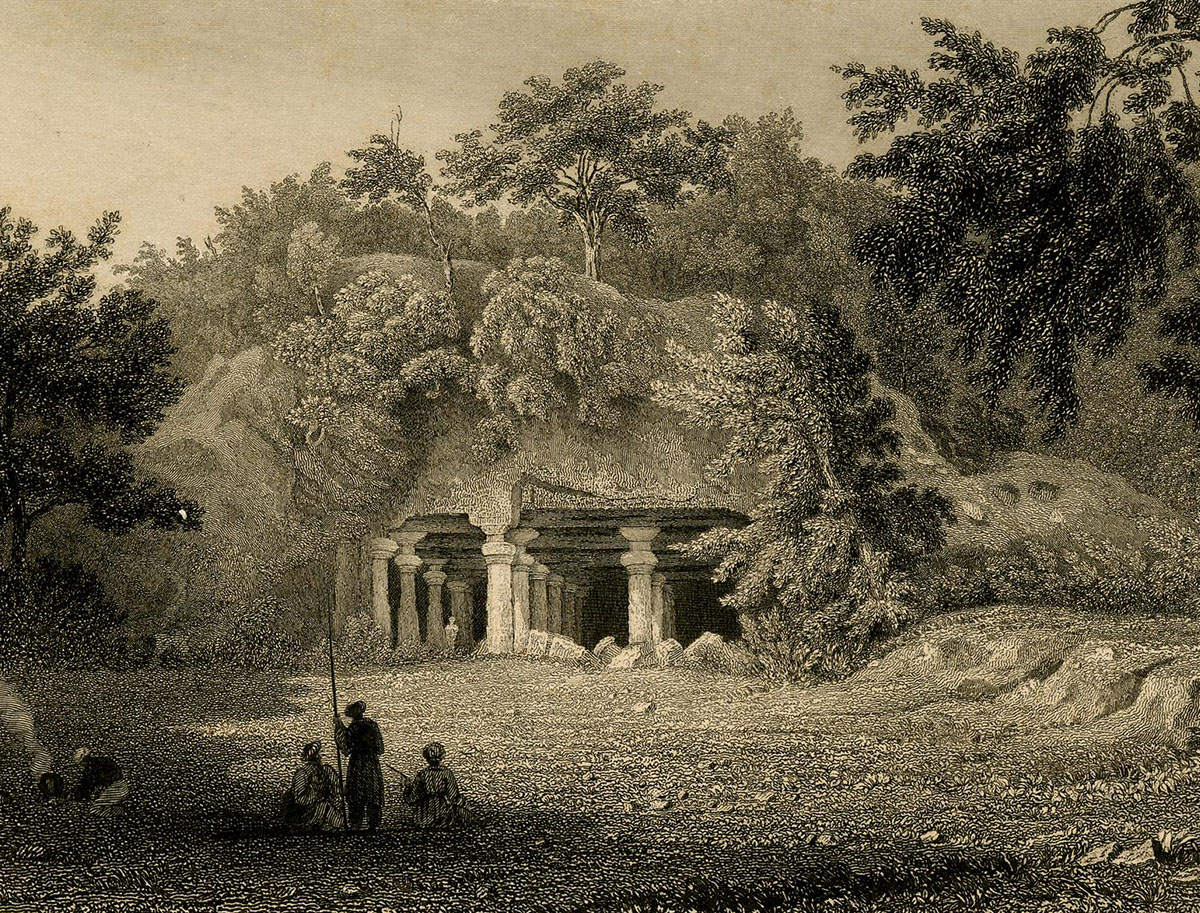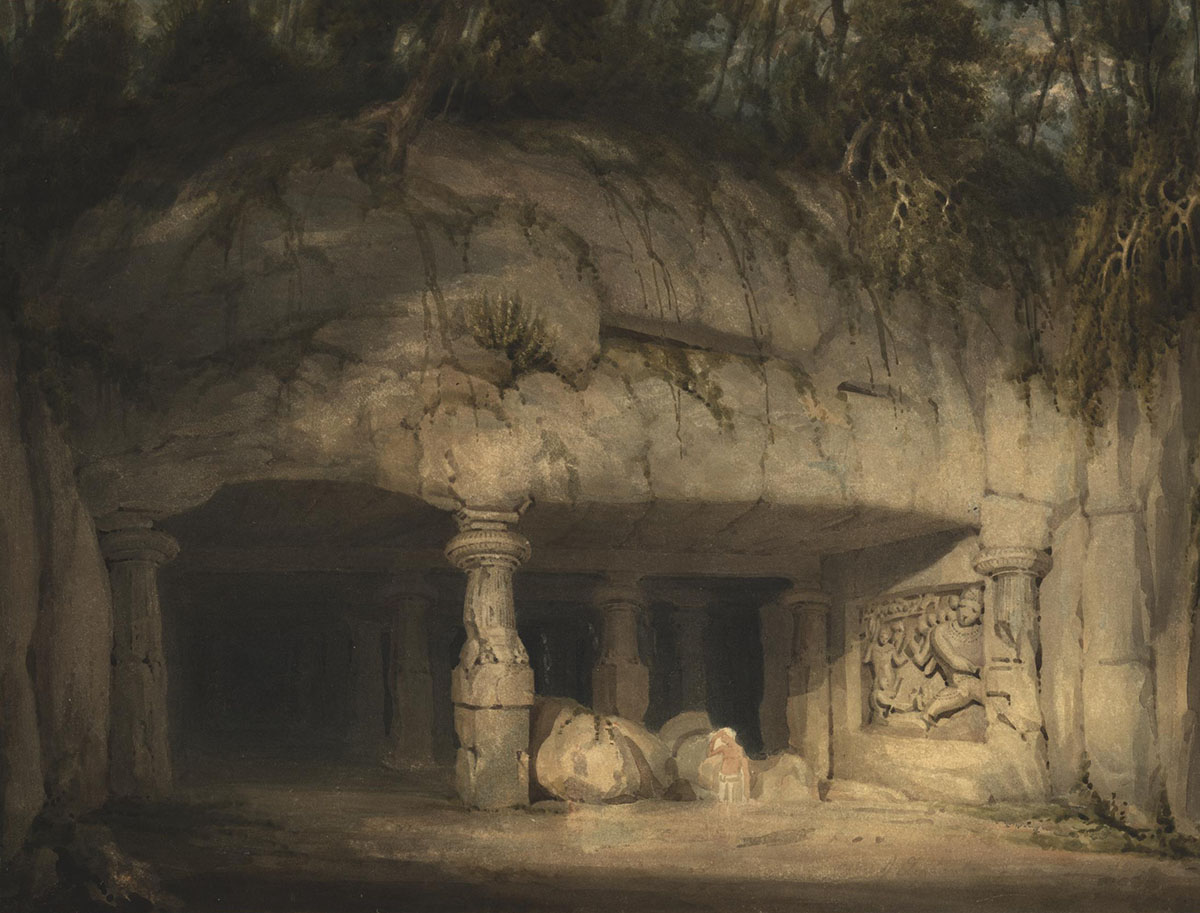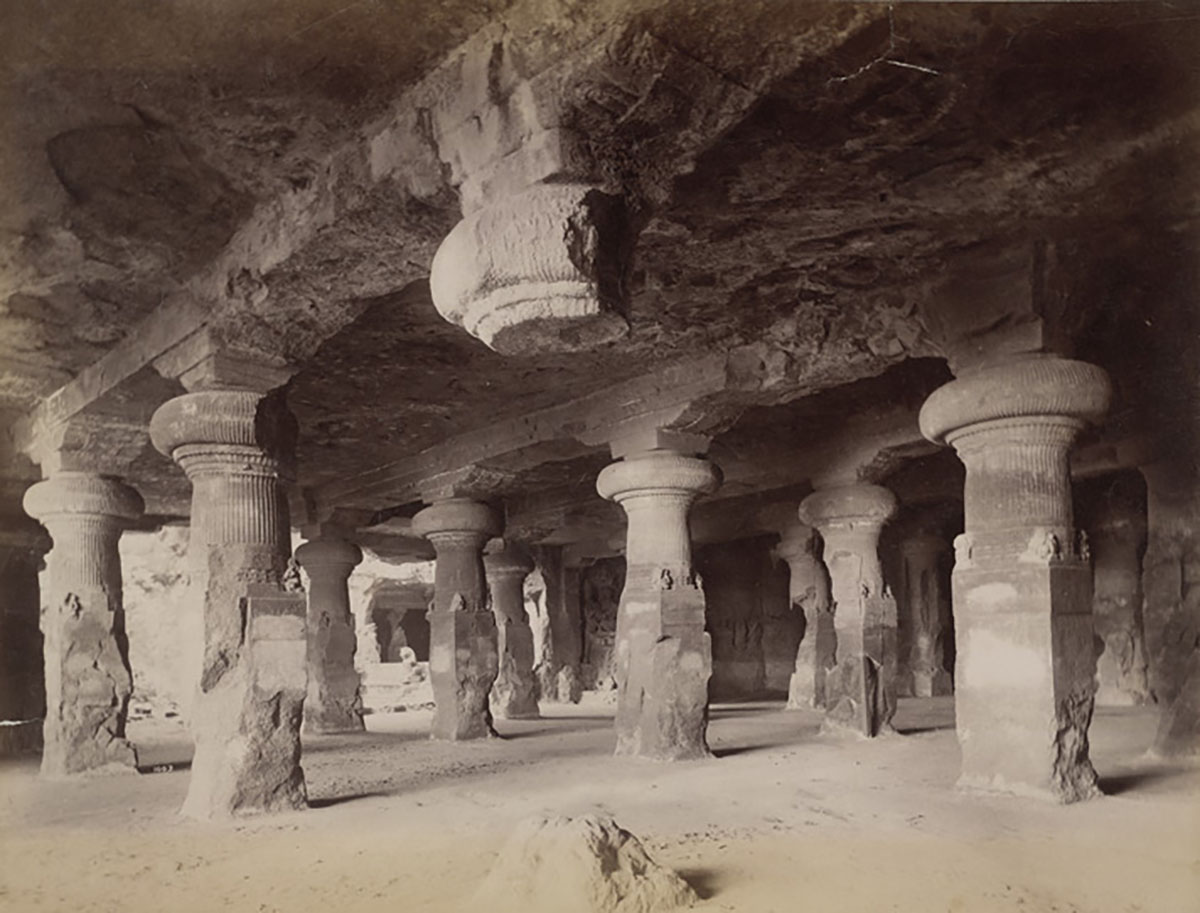ARTICLE
Elephanta Caves
A series of hollowed-out, basalt rock-cut enclosures on the Elephanta Island, filled with carved reliefs and sculptural images representing myths from the life of Shiva, along with a group of smaller caves dedicated to the Buddha, are known as Elephanta Caves. The place is also referred to as Gharapuri – the city of caves, which is also the name of a small village nearby. It is located 10 km to the east of Mumbai and the island has an area of about 10 to 16 square km (shifting with the tides) and is lodged in the Mumbai Harbour in the Arabian Sea. The name is derived from early Portuguese navigators who called the island Ilha Elefante, due to the presence of a large stone elephant that has since been removed to the Victoria Gardens (now Veermata Jijabai Bhonsale Udayan), Mumbai. The dates of its construction and the precise identity of the builders are still debated, but it is generally agreed to have been carved between the fifth and eighth centuries CE, perhaps by Krishnaraja, the Kalachuri king, although there is evidence of activity and settlement on the island since the second century BCE. The caves occupy about 5000 square metres of space, with the hills rising to 150 metres at the highest point.
Description of the caves and interpretation of the iconography has evolved considerably since early recorded efforts by the Portuguese and Jesuit settlers, who had been ceded the island by the kings of Ahmedabad in the sixteenth century. It is held by some scholars that a stone inscription was also present at the site, possibly containing more details about the construction in Brahmi script, which was removed to Portugal and lost. Since then, the paint works have faded considerably and many of the sculptures and rock-cuts have been damaged by the vandalism of the Portuguese settlers and worn out by the naturally corrosive force of the saline waters and industrial activity nearby. In the late-seventeenth century, the territory was handed over to the British East India Company as a gift.
Scholars have generally agreed that the architectural style of Elephanta caves evolved from the earliest Buddhist structures, especially monasteries that, over time, began to accommodate shrines within them. The two architectural styles – Buddhist and Hindu – were deliberately combined to achieve harmony between them. Furthermore, scholars also posit that the plan of the caves was made to resemble a mandala, focusing on the central figures of the lingam – where the journey of the devotee is intended to culminate – and the Maheshmurti.
The largest cave, called Cave 1, is about 38.4 metres deep and 37.8 metres wide. The flat ceiling is supported by twenty-four columns (and concealed beams) that have divided the space into several corridors. Towards the back of the temple is the 18-foot tall sculpture of Maheshmurti with a lingam enshrined next to it, facing a statue of Nandi. The northern entrance to the cave is reached by climbing one thousand steps. Some of the sculptural forms that can be seen in the cave include Gupta-period panel carvings of Shiva in his various forms, such as the Yogishvaraj (the Lord of Yoga) and the Nataraja (the Lord of Dance). The sculptures in the main temple are situated in deep recesses where they have been carved in nearly full relief. Some of the Shiva sculptures depicted here include the calm posture of the Mahayogi, seated in padmasana, accompanied on either side by representations of deities Vishnu and Brahma, although some have suggested the central figure to be that of Yoga-Dakshinamurti, instead. Ravanugraha statue depicts him with Parvati, during an episode where he encounters Ravana. This panel is badly damaged and the characters have been identified due to their similarity with other panels in Ellora. Another damaged panel shows the remains of a Uma-Maheshvari statue, which contains the twin principles of male and female energy, accompanied by the figures of Nandi, some attendants and a winged dwarf. Situated next to the Maheshmurti is the form of Shiva as Gangadhara channelling the river Ganga through his topknot. One of the most impressive figures is the Ardhanarishvara, depicting Shiva in both male and female forms with four hands and is set upon a statue of Nandi. Another form represented is the Andhakasuravadha where Shiva is depicted in the act of killing the demon Andhaka.
Cave 2 is situated towards the southeast of the main cave. It contains four pillars and a shrine, with traces of sculptural works that are badly damaged. Caves 3 and 4 are somewhat similarly planned with many of their pillars and pilasters still standing. Cave 4 contains a lingam shrine at the back, although the dwarapalas that should have existed are now missing. Cave 5 has a veranda and a shrine, containing both a yoni and a lingam. Another cave is situated nearby, but it appears to be unfinished. The space of the caves where the statues are installed is also designed to be sanctums for worshippers, known as garbhagriha (innermost sanctuary).
Although there are several architectural and iconographic continuities with other monuments, including Ajanta and Ellora, the Elephanta caves were the site of several important innovations as well. Freestanding sculptural forms were merged with bas-relief carvings on the wall. This marked a leap towards representing three-dimensionality, both in figural form and space, as flat background walls were often replaced with recessed chambers, allowing for the creation of circumambulatory paths for devotees. Opening out the temple space on three sides, encouraging a stronger play with light and darkness, was another method that was developed at Elephanta.
Several works and sculptures from the caves are now held at museums and galleries across India. For instance, a fragmented basalt Durga, or Mahishasuramardini statue from the Elephanta Caves is now lodged at the Chhatrapati Shivaji Maharaj Vastu Sangrahalaya (CSMVS), Mumbai, showcasing skilful and vivid depictions of movement and vigour. Due to the large relief works surrounding the main cave, the intricate and colossal sculptures within them and the exemplary display of rock-cut architecture, the Elephanta caves was deemed a UNESCO World Heritage Site in 1987. Its supervision is undertaken by the Archaeological Survey of India (ASI), in association with several state and central bodies and parliamentary acts of protection. Some pillars were restored in the 1960s, but the site’s deterioration over the years has attracted calls for more concentrated, technologically-aided efforts at preservation and restoration.
Bibliography
Our website is currently undergoing maintenance and re-design, due to which we have had to take down some of our bibliographies. While these will be re-published shortly, you can request references for specific articles by writing to hellomapacademy@map-india.org.











